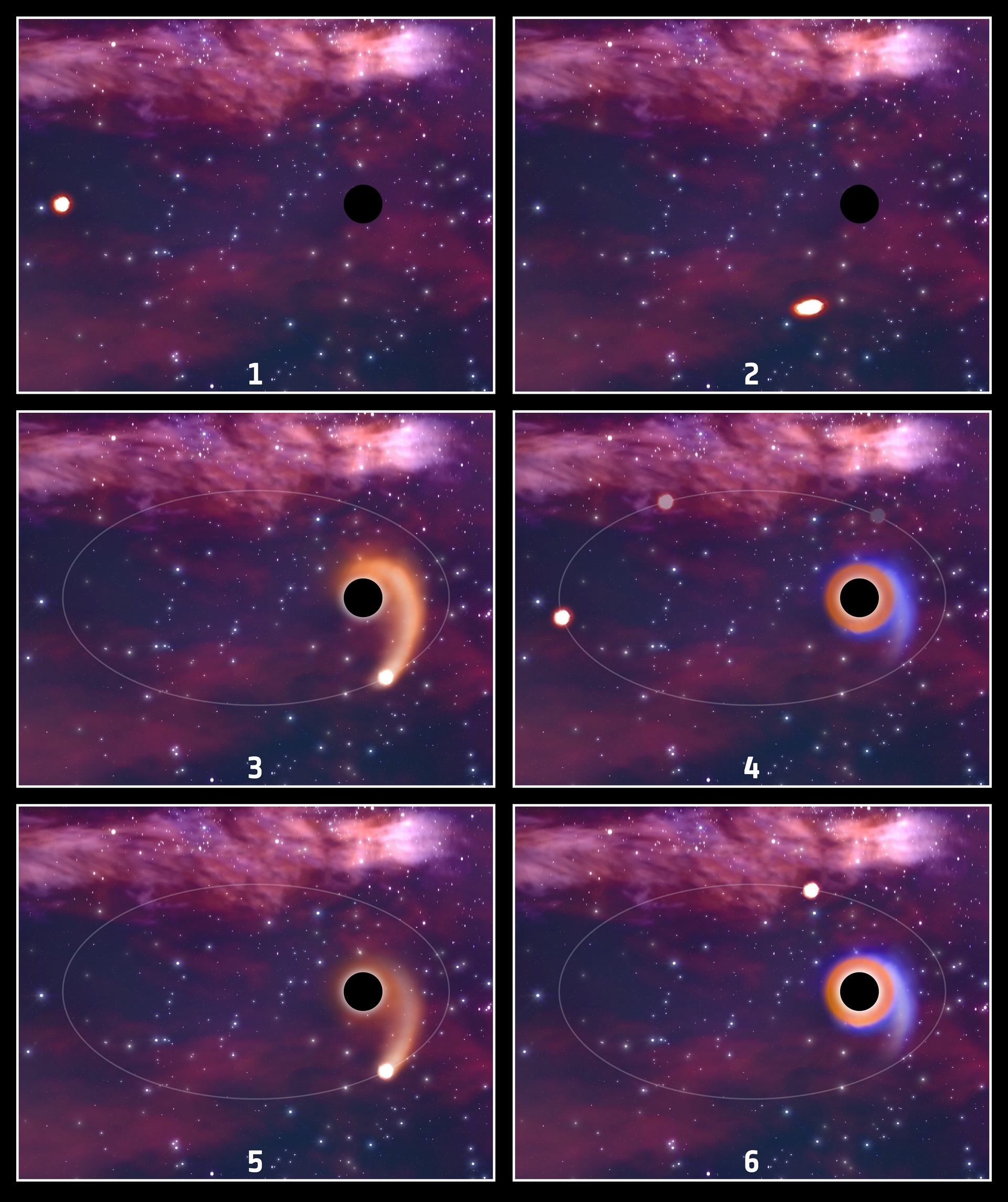Black holes are often seen as cosmic monsters that swallow anything unlucky enough to stray too close. But new research suggests they do not always win — some stars can skim the Milky Way‘s central black hole, Sagittarius A*; lose mass; and stagger away. Scarred but alive, these survivors shine brighter than before, leaving clues that astronomers are only now learning to read.
“Just as the moon pulls tides on Earth, a black hole tugs on a star with far greater force,” Rewa Clark Bush, a doctoral candidate in astronomy at Yale University and lead author of the study, told Live Science in an email. Push too far, and the star unravels. Yet some withstand the strain. “One of the stars we modeled lost over 60 percent of its envelope but still retained enough core material that it survived and escaped,” Bush said.
The authors think that by counting survivor stars, astronomers might measure how often Sagittarius A* feeds on nearby stars — and the number may help to explain how our galaxy’s central black hole grew to 4 million times the mass of the sun.
“Black holes are like chickens in a coop that only eat what they are fed,” Heino Falcke, a professor of astrophysics at Radboud University in the Netherlands, not involved in the study, told LiveScience in an email. “The study provides a new toolbox to find these marred stars and learn about the history of our galactic center black hole’s feeding habits.”
Brighter after the storm
The team used advanced 3D simulations to follow stars brushing past the Milky Way’s black hole and track their long-term evolution. The results, published Aug. 27 in The Astrophysical Journal Letters, showed that a near miss — known as a partial tidal disruption — can trigger a brilliant transformation. A survivor star may throw off ribbons of plasma, swell to many times its original size, and glow up to 10 times brighter for thousands of years.
The show, however, does not last. Surviving stars gradually shrink and begin to masquerade as ordinary stars. Their only giveaway is chemical: The violence dredges up helium and nitrogen from the core to the surface.

“You would need to take spectroscopic data,” Bush said — breaking starlight into its component colors — “to notice anomalies that reveal the trauma.”
Giuseppe Lodato, an associate professor of astrophysics at the University of Milan, not involved in the study, told Live Science in an email that although survivor stars are well known to astrophysicists, this study stands out for characterizing their brightness and chemical evolution over time.
A clue to the G objects
The study may also address a mystery that has lingered in the Milky Way’s core for years. Astronomers have observed several fuzzy light sources known as G objects. These bodies move like stars yet look like diffuse clouds in infrared images. Survivor stars fit the description — they’re swollen and wrapped in material blown off during disruption.
“It is very exciting how the authors make a link with the still mysterious and heavily debated G objects,” Selma de Mink, scientific director at the Max Planck Institute for Astrophysics in Germany, not involved in the study, told Live Science in an email.
Spotting these stars is not an easy task. Sjoert van Velzen, an assistant professor at the Leiden Observatory in the Netherlands, not involved in the study, told Live Science in an email that even the most ambitious new surveys, such as those undertaken by the Vera C. Rubin Observatory, will reveal thousands of bright flares from complete tidal disruptions in distant galaxies, not the faint remnants that slip away.
“The galactic center is crowded, with stardust blocking most optical light,” de Mink said. Infrared instruments such as GRAVITY, which she likened to thermal cameras piercing smoke, are better suited to identifying swollen stars that may hide among the puzzling G objects.
